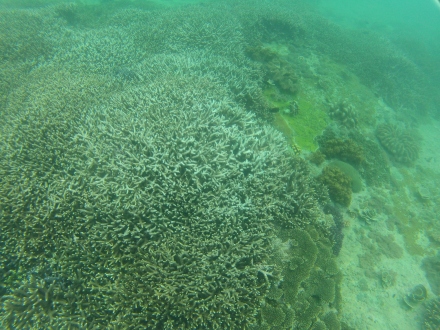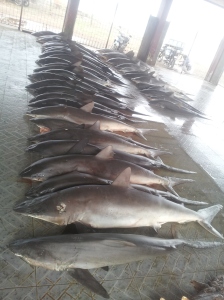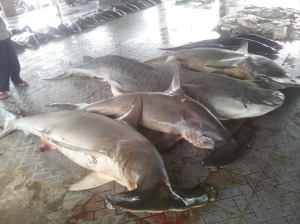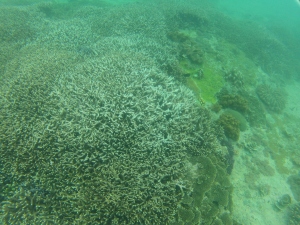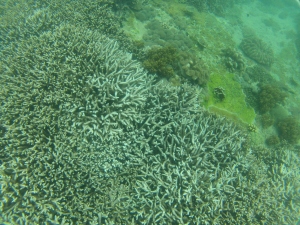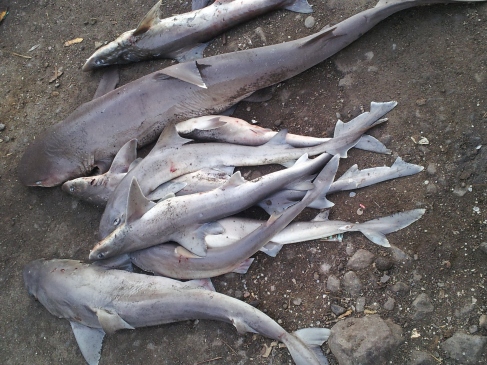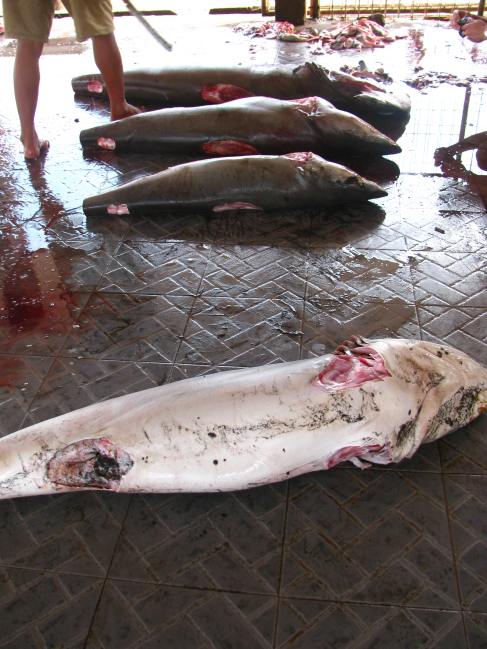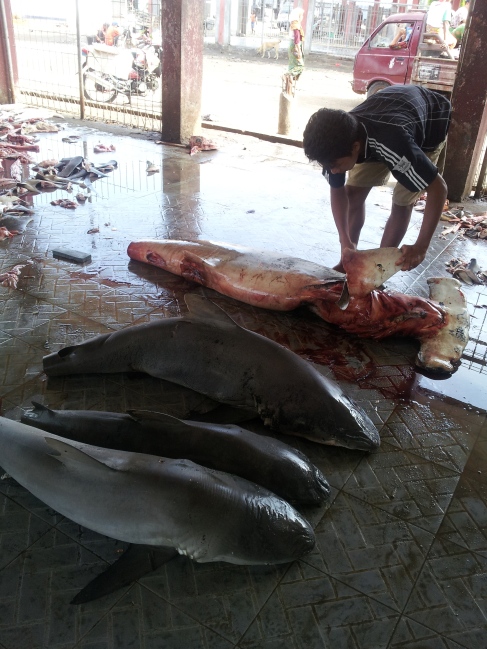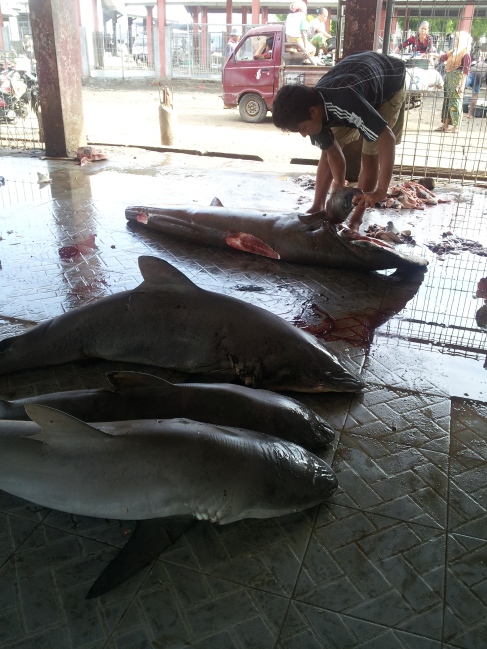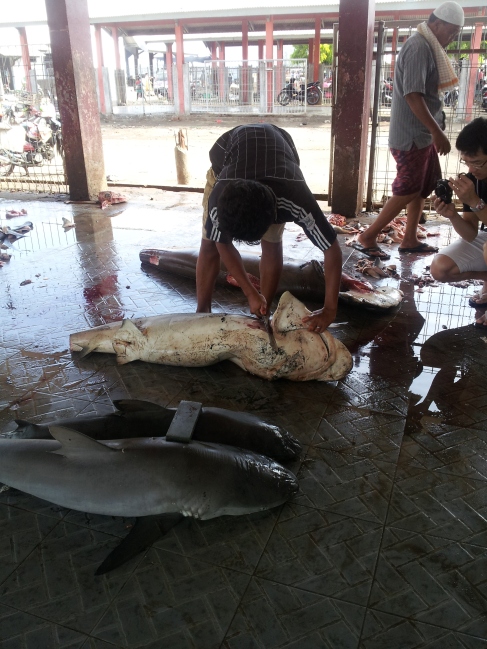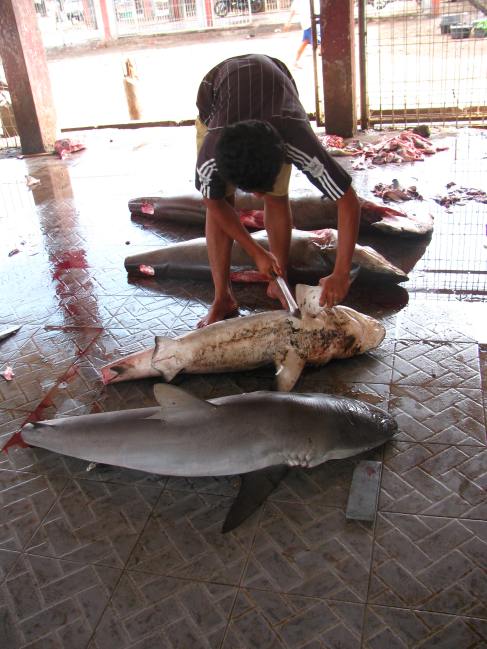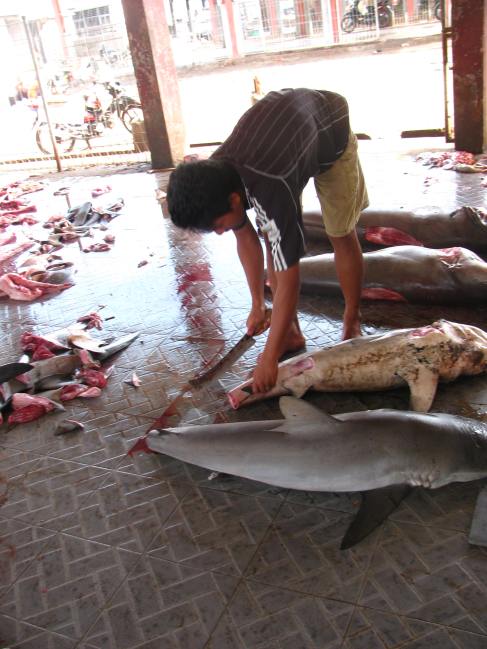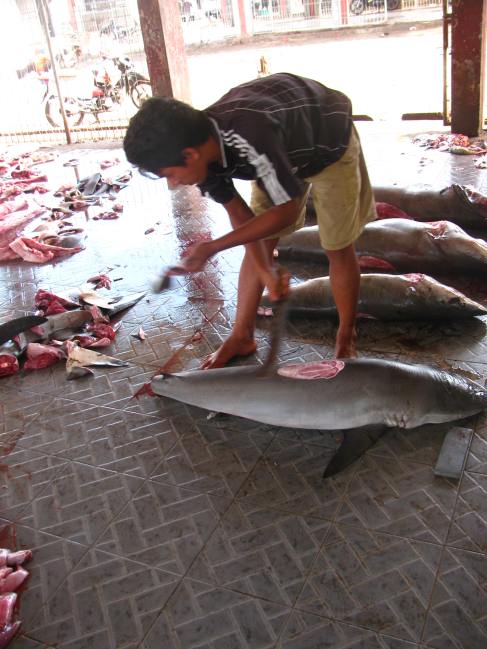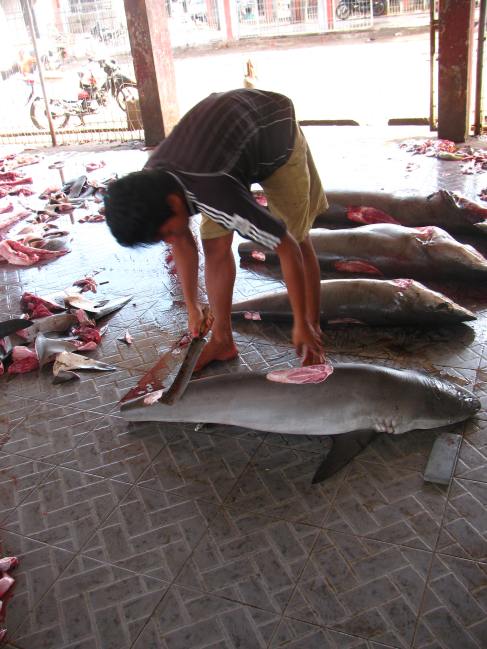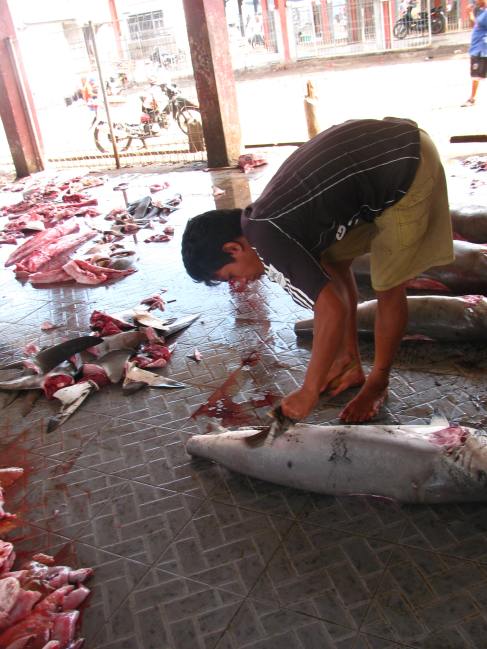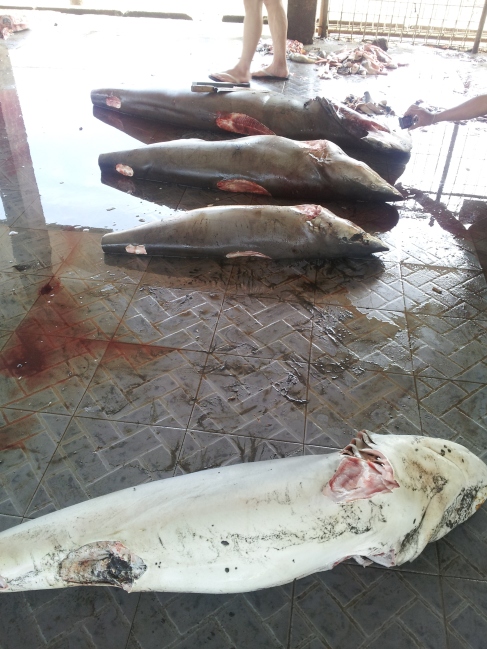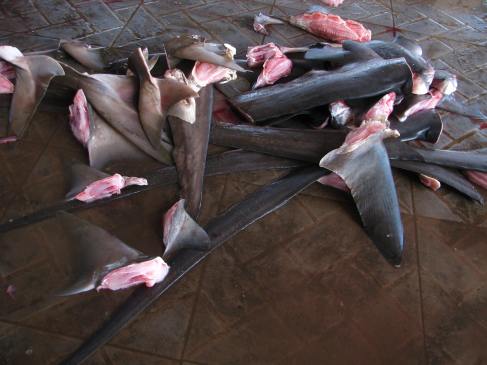Our fifth ever boat excursion the day before did not start off very well at all, we walked around the fish market and I saw a horrific number of sharks caught this morning. A row of about 20 juvenile ones and about 6 full grown, 2 of which were looked like the Great hammerheads…
I realised that the people in the shark abattoir seemed unfamiliar to me this time, not the usual fishermen I use to see or talk to, and I found out from Agus later that they were not fishermen from Lombok, possibly fishermen from the neighbouring islands. Tanjung Luar is still such a main trading centre for fish and sharks and suddenly the problem seemed so much bigger to me at that instance. I felt lost and a little crushed and my guests were horrified at the sight of the shark carcasses. Is this my battle to fight or a lost cause as I seem to be swimming upstream all the time. I try to build relationships slowly, I understand the needs and pains of some of the fishermen living in Tanjung Luar, and then I see this for myself and wonder if I am approaching this the wrong way. You can see dead sharks constantly but the the fact of the ongoing deaths still pierced at the heart as I broke down in a corner after we walked away. Wasn’t it just the day before that I received an update from Shark Savers that shark prices in Tanjung Luar has gone down by 80%? It is not lucrative and just too much work, surely they have to see the value of the tourist dollar? And it hit me that perhaps targetting the fishermen in Tanjung Luar wasn’t going to work, I needed the help of legislation and enforcement, but who could I approach or who do I know? I want shark fishing to be stopped here and I wanted the Lombok government to see that ecotourism is really the sustainable and long term answer to a country whose shores are so rich with reefs and marine life like no other, but is quickly being decimated. The irony of tourists wanting to seek out pristine beaches and reefs to visit yet the local population are looting and plundering their own resources without realizing that preserving these assets can bring them so much more in the long run. Legislation, education and incentive.
As we set out on our boat excursion, I saw something I hadn’t seen before at my favourite snorkel site just off pink beach too. Yes the waters were still crystal clear and there was still an array of teeming marine life, but I noticed there was some bleaching that was happening to the corals now that I hadn’t noticed before too. Are the oceans becoming warmer that the effects pervade to these calm inner reefs now, or did something happen here that was a result my of bringing tourists here. I am left disturbed and very conflicted indeed.
At the end of the excursion as we came back ashore, the fishermen led Agus to his house which was a stone’s throw from the fish market and handed him some bags of rocks because he learnt that Agus was in the midst of building his house and was in need of materials he had that he could spare. I was really heartened by the gesture and truly, the Indonesians have a gotong royong community spirit to help one another, which is why building relationships with them is so crucial in what I set out to do. A community that works together for positive change in the world can be a powerful force when harnessed.
There are many questions and problems that keep coming up in this journey and there have been so many moments where I have felt so small and so alone in the choice to plough ahead, but with Agus’ brilliant mind and sincere belief that this will work and with the heartening replies from people I have never even met before, on the Facebook post I made the morning before, I know I gotta keep swimming and working with the angels I have continually been blessed to encounter.
Thank you, all of you, for echoing the cause and fighting alongside me as well so I never feel alone.

